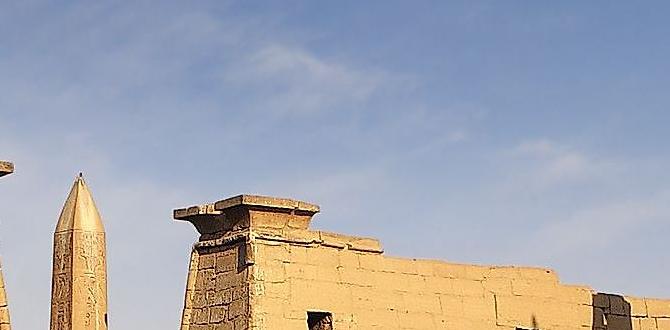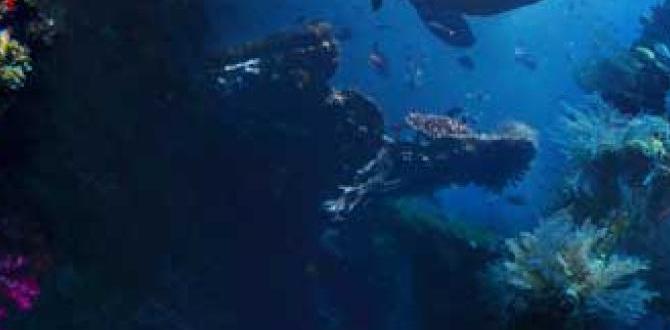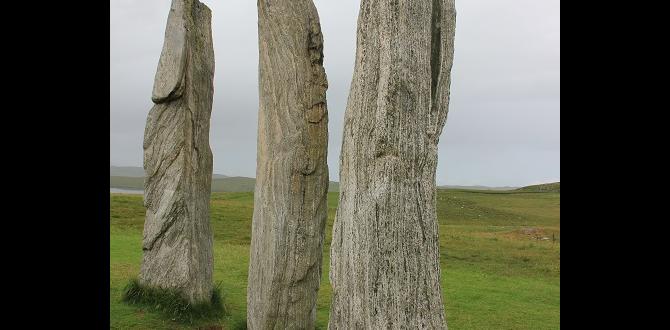Planning an Atacama Desert winter trip is simpler than you think! This guide focuses on essential packing, comfortable travel, and stress-free planning for the driest desert on Earth during its cooler months. Get ready for an unforgettable adventure with practical advice for everyone, including families managing essentials like child diapers.
Dreaming of the stars twinkling in the world’s driest desert, but worried about the chill? Visiting the Atacama Desert during its winter months (roughly June to August) offers a unique, breathtaking experience. While the temperatures drop, the skies become even clearer, perfect for stargazing. However, this transition can leave travelers wondering what to pack and how to prepare.
Don’t let the thought of cold nights or desert chill dampen your travel spirit! We’re here to break down everything you need for a comfortable and memorable Atacama Desert winter trip. Get ready to explore this otherworldly landscape with confidence, knowing you’re covered from essential layers to everyday travel needs.
Why Choose Winter for Your Atacama Desert Trip?
While many associate deserts with relentless heat, the Atacama Desert in winter offers a truly special experience. The daytime temperatures are pleasant, often hovering around a comfortable 18-25°C (64-77°F), making exploration enjoyable.
The real magic, however, happens after sunset. The cooler, drier air leads to exceptionally clear skies, making it one of the premier stargazing locations on the planet. Imagine looking up at a canopy overflowing with stars, the Milky Way so vibrant you can almost touch it! This clarity reduces atmospheric interference, offering unparalleled views for both amateur astronomers and casual observers.
Furthermore, winter is considered the shoulder season for many parts of South America, meaning you might find slightly fewer crowds and potentially better deals on accommodations and tours compared to the peak summer months. This allows for a more intimate experience with the vast landscapes and geological wonders of the Atacama.
Essential Packing Guide for Your Atacama Desert Winter Trip
Layering is the golden rule for any Atacama Desert winter trip. The temperature can fluctuate significantly between day and night, and even within the day itself. Think versatile pieces that can be added or removed as the conditions change.
Clothing Layers for Comfort
Your wardrobe should focus on adaptability and warmth. Here’s a breakdown:
- Base Layers: Long-sleeved thermal tops and leggings are crucial. Opt for moisture-wicking materials like merino wool or synthetic blends. These will trap body heat and keep you dry.
- Mid Layers: Fleece jackets, down vests, or sweaters provide insulation. These are your warmth providers and can be easily taken off if the sun comes out in full force.
- Outer Layer: A waterproof and windproof jacket is essential. Even though it’s a desert, wind can make it feel deceptively cold, and unexpected light rain isn’t impossible. A hood is a big plus for extra protection from wind and sun.
- Bottoms: Comfortable hiking pants or sturdy trousers are ideal for daytime exploration. Consider fleece-lined or thermal pants for cooler days or evenings. Avoid shorts unless you only plan to be active during the warmest parts of the day and are okay with potentially feeling chilly.
Headwear and Footwear
Don’t underestimate the extremities! Keeping them warm and protected makes a huge difference.
- Headwear: A warm beanie or wool hat is a must for evenings and early mornings. A sun hat or cap is essential for daytime to protect against the strong desert sun, even in winter.
- Gloves: Lightweight to medium-weight gloves will be your best friend during stargazing tours or early morning excursions.
- Socks: Several pairs of warm, wool or thermal socks are needed to keep your feet cozy in boots.
- Footwear: Sturdy, closed-toe hiking boots or comfortable walking shoes with good grip are non-negotiable. You’ll be walking on uneven terrain, sand, and potentially rocky paths. Ensure they are broken in before your trip to avoid blisters.
Accessories for the Desert Environment
These items enhance your comfort and safety in the unique Atacama climate.
- Scarf or Neck Gaiter: Excellent for protecting your face and neck from wind and dust. A buff or a lightweight scarf is versatile.
- Sunglasses: The high altitude and sun intensity mean you need good UV protection for your eyes.
- Sunscreen: Even though it’s winter, the sun is strong at high altitudes. Pack a broad-spectrum SPF 30 or higher sunscreen.
- Lip Balm with SPF: Desert air is dry, and lips can chap quickly.
- Reusable Water Bottle: Staying hydrated is critical. The dry air can dehydrate you faster than you might think.
- Small Backpack: For carrying essentials like water, snacks, sunscreen, and an extra layer during day trips.
Stargazing Specific Gear
If observing the night sky is high on your priority list, consider these additions:
- Headlamp with Red Light: Essential for navigating in the dark without ruining your night vision or the vision of others on a tour. Red light preserves your eyes’ ability to adapt to the darkness.
- Camera and Tripod: The Atacama is a photographer’s dream. A tripod is essential for capturing long-exposure shots of the stars.
Planning Your Atacama Desert Winter Trip Step-by-Step
A little planning goes a long way for a stress-free adventure. Here’s a simple guide to get you started.
Step 1: Book Flights and Accommodation
The main gateway to the Atacama Desert is Calama (CJC). From Calama, you’ll take a bus or private transfer to San Pedro de Atacama, the main tourist hub. Book your flights and accommodation well in advance, especially if traveling during any local holidays or school breaks.
Popular accommodation options range from budget hostels to boutique hotels. Consider booking accommodation that includes breakfast to save time and money.
Step 2: Research and Book Tours
San Pedro de Atacama offers a plethora of incredible excursions. While some can be booked on arrival, popular tours, especially stargazing ones, fill up quickly. Here are some must-dos:
- Valle de la Luna (Moon Valley) and Valle de la Muerte (Death Valley): Famous for their surreal landscapes, salt formations, and stunning sunset views.
- El Tatio Geysers: The highest geyser field in the world. You need to go very early in the morning (pre-dawn) for the best experience as the geysers are most active in the cold air. This is where warm layers are absolutely vital!
- Salar de Atacama (Atacama Salt Flat): Home to flamingos in the Chaxa Lagoon.
- Altiplanic Lagoons (Miscanti and Miñiques): High-altitude lagoons with vibrant blue waters set against volcanic backdrops.
- Stargazing Tours: An absolute highlight. Book with reputable operators who provide telescopes and knowledgeable guides.
It’s often recommended to book a few key tours in advance and leave some flexibility to book others locally, depending on weather and how you feel.
Step 3: Consider Travel Insurance
As with any trip, especially one involving adventure activities and remote locations, travel insurance is highly recommended. It provides peace of mind in case of unexpected medical emergencies, trip cancellations, or lost luggage. Ensure your policy covers high-altitude activities if you plan to visit places like El Tatio Geysers or specific astronomical observatories.
Step 4: Prepare for Altitude
San Pedro de Atacama itself is at an altitude of about 2,400 meters (7,900 feet), and many tours go higher, with El Tatio Geysers being around 4,320 meters (14,173 feet). Altitude sickness can affect anyone, regardless of fitness level. To minimize risks:
- Acclimatize: Take it easy on your first day. Drink plenty of water and avoid alcohol and heavy meals.
- Stay Hydrated: Drink water constantly. Dehydration can worsen altitude sickness symptoms.
- Avoid Strenuous Activity on Day 1: Gentle walks are fine, but long hikes or strenuous activities are best saved for when you’re more adjusted.
- Consider Medication: Consult your doctor about Diamox (acetazolamide) or other altitude sickness remedies.
For more information on altitude sickness and prevention, the U.S. National Library of Medicine’s MedlinePlus offers excellent, authoritative guidance.
Step 5: Manage Personal Comfort Needs
Travel is about comfort and peace of mind. For some travelers, this includes managing personal care needs discreetly and reliably. If you or someone you’re traveling with uses adult diapers or requires child diapers for children, planning for these necessities is part of stress-free travel.
- Pack Sufficient Supplies: It’s wise to pack more than you think you’ll need. Availability of specific brands or sizes can be limited in smaller towns like San Pedro de Atacama.
- Discreet Travel Bags: Consider using discreet carrying solutions for convenience and privacy during transit and day trips.
- Comfort for Long Journeys: For long flights or bus rides, comfortable and reliable absorbent products can make a significant difference.
Ensuring these personal needs are met allows you to focus entirely on the incredible experiences the Atacama has to offer, from its unique geology to its star-filled skies.
Atacama Desert Winter Weather and What to Expect
The winter months in the Atacama Desert, from June to August, are characterized by cooler temperatures and clear skies. It’s a dry season, so rainfall is minimal to non-existent, but the air is very dry, contributing to the exceptional stargazing conditions.
| Month | Average High Temperature (°C / °F) | Average Low Temperature (°C / °F) | Rainfall |
|---|---|---|---|
| June | 20°C / 68°F | 3°C / 37°F | Very Low / None |
| July | 19°C / 66°F | 2°C / 36°F | Very Low / None |
| August | 21°C / 70°F | 4°C / 39°F | Very Low / None |
As you can see from the table, while daytime temperatures can be quite pleasant, especially in the sun, nighttime temperatures can drop significantly, often close to or below freezing. This is particularly true at higher altitudes.
Daytime Versus Nighttime Temperatures
During the day, the sun intensifies at altitude, so you can often feel warm enough to be in just a t-shirt, especially when hiking or actively moving. However, as soon as the sun dips below the horizon, the temperature plummets rapidly. For stargazing tours, which often happen late at night, you will be exposed to these cold temperatures for several hours.
The Importance of Wind Protection
Wind is a significant factor in the Atacama. Even on a sunny day, the wind can make it feel much colder than the air temperature suggests. This is why a good windproof outer layer and a scarf or neck gaiter are so critical for comfort.
Tips for Parents Traveling with Children
The Atacama Desert can be an incredible adventure for families, but it requires thoughtful preparation, especially regarding children’s comfort and needs.
Packing for Kids
- Layers, Layers, Layers: Kids feel the cold (and heat) even more intensely. Pack the same layering system as advised for adults, ensuring easy on-and-off clothes.
- Comfortable Footwear: Ensure children have well-fitting, closed-toe shoes.
- Sun Protection: Hats with wide brims, sunglasses, and child-safe sunscreen are non-negotiable.
- Hydration: Encourage constant sipping of water. Fun-looking reusable water bottles can help.
- Snacks: Pack familiar, high-energy snacks. While local markets exist, having preferred snacks can be a lifesaver, especially during long excursions.
Managing Child Diapers and Potty Breaks
Travel with young children often involves managing diaper needs. Here are some practical tips:
- Sufficient Supply: Pack more diapers than you anticipate needing. Availability in San Pedro can be limited and expensive.
- Travel-Friendly Changes: For day trips, use portable changing mats and a dedicated wet bag for soiled diapers.
- Easy Access: Keep a small change of clothes and diapers easily accessible in your daypack.
- Hydration and Potty Training: If your child is potty trained, be aware that restrooms might not always be readily available on longer tours. Plan stops accordingly and make frequent use of facilities when available.
Altitude and Kids
Children can be more susceptible to altitude sickness. Watch for symptoms like fussiness, lethargy, headache, nausea, and appetite loss. It’s crucial to:
- Hydrate Them Well: Ensure constant water intake.
- Avoid Overexertion: Don’t push them too hard on the first day.
- Consult a Pediatrician: Discuss altitude preparation and potential medications suitable for children with your child’s doctor before your trip.
Choosing Family-Friendly Tours
Most tour operators are accustomed to families. Inquire about age restrictions and suitability for younger travelers when booking. While early morning excursions like El Tatio Geysers might be challenging with very young children due to the extreme cold and early start, mid-day tours to Valle de la Luna or stargazing tours (if children are generally good sleepers or accustomed to late nights) can be fantastic family experiences.
Staying Comfortable and Healthy on Your Trip
Beyond packing, a few other considerations will ensure your Atacama Desert winter trip is as comfortable and healthy as possible.
Hydration is Key
The Atacama is a high-altitude desert; the air is extremely dry. Even if you don’t feel particularly thirsty, you are losing moisture through breathing and sweat. Dehydration can lead to headaches, fatigue, and can exacerbate altitude sickness symptoms. Make it a habit to sip water constantly throughout the day from your reusable bottle. Local stores sell bottled water, but carrying your own is more eco-friendly and convenient.





